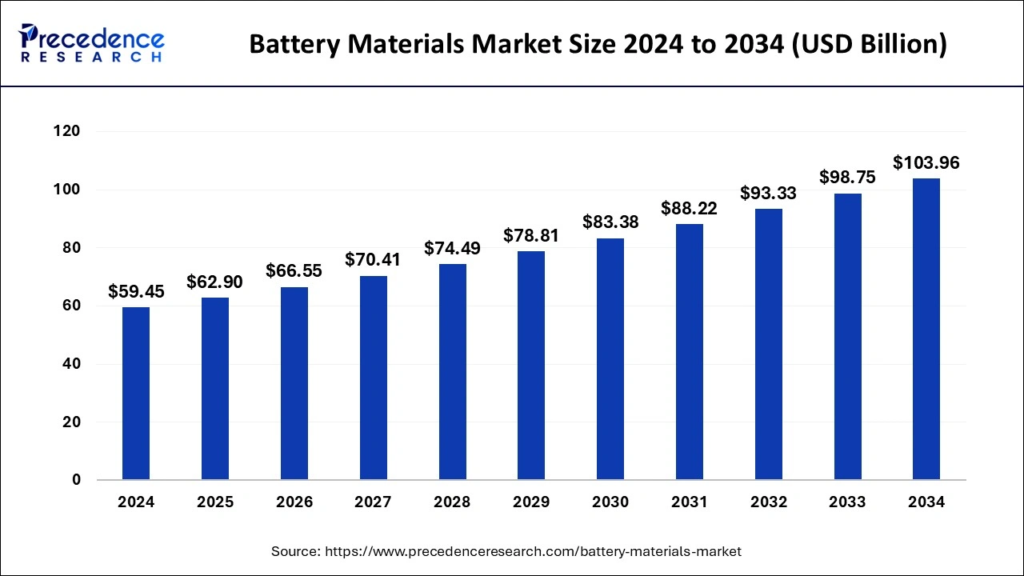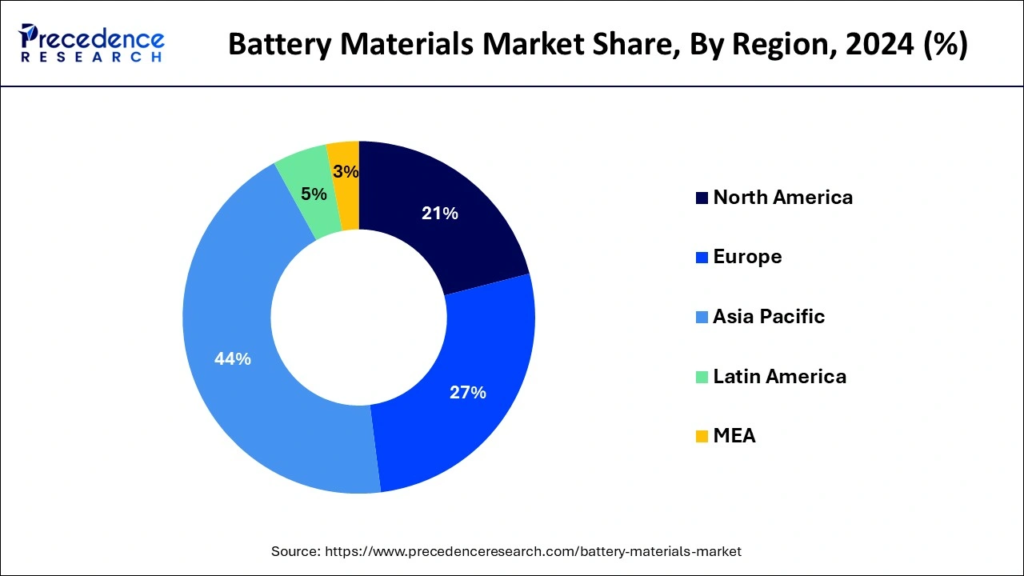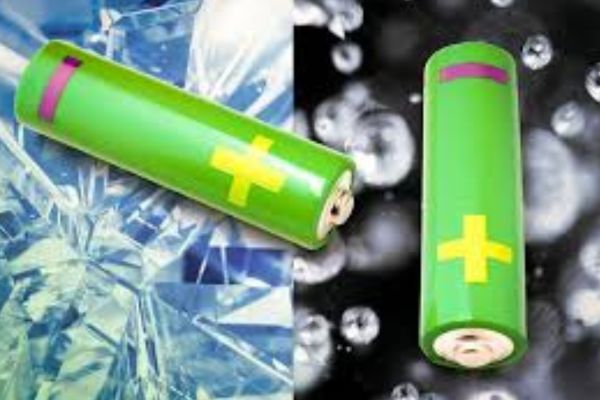The global battery materials market size was valued at USD 59.45 billion in 2024 and is expected to attain around USD 103.96 billion by 2034, growing at a CAGR of 5.75%.

Battery Materials Market Key Takeaways
- In 2024, the Asia Pacific region held a 43.14% share of the total revenue.
- Based on battery type, the lithium-ion segment contributed 47% to the overall revenue in 2024.
- The lead-acid battery segment accounted for 36% of the revenue share in 2024.
- In terms of application, the electronics industry segment commanded a 46% market share in 2024.
How Is AI Revolutionizing the Battery Materials Market?
AI is playing a transformative role in the battery materials market by accelerating the discovery and development of advanced materials. Through machine learning and data-driven modelling, AI helps researchers predict material properties, identify optimal compositions, and simulate performance outcomes significantly reducing the time and cost of R&D.
In manufacturing, AI enhances process efficiency by enabling real-time quality control, optimizing production parameters, and predicting equipment maintenance needs, leading to higher yields and consistent material quality.
Additionally, AI is crucial in battery performance management and sustainability. It powers smart Battery Management Systems (BMS) that monitor health, predict lifespan, and optimize thermal regulation. In the recycling sector, AI-driven automation facilitates efficient sorting and recovery of valuable materials.
Moreover, AI tools support strategic decision-making by forecasting material demand, tracking market trends, and improving supply chain management, ultimately fostering innovation and sustainability across the battery materials value chain.
What Are Battery Materials?
Battery materials are the essential components used in the production of batteries, especially rechargeable types like lithium-ion batteries. These materials are categorized based on the parts of a battery they form cathode, anode, electrolyte, and separator.
Key Types of Battery Materials:
- Cathode Materials:
- Common materials: Lithium cobalt oxide (LCO), lithium iron phosphate (LFP), lithium nickel manganese cobalt oxide (NMC), etc.
- Role: Determines the battery’s capacity, voltage, and overall performance.
- Anode Materials:
- Common materials: Graphite, lithium metal, silicon-based compounds.
- Role: Stores and releases lithium ions during charging and discharging cycles.
- Electrolytes:
- Types: Liquid (organic solvents with lithium salts), solid-state, or gel based.
- Role: Enables the movement of ions between the cathode and anode.
- Separators:
- Usually made of porous polymers (e.g., polyethylene or polypropylene).
- Role: Prevents physical contact between cathode and anode while allowing ion flow.
Applications:
Battery materials are crucial for manufacturing batteries used in:
- Consumer electronics (smartphones, laptops)
- Electric vehicles (EVs)
- Renewable energy storage systems
- Industrial and medical equipment
Trends and Innovations:
- Solid-state batteries: Using solid electrolytes for improved safety and energy density.
- Silicon anodes: Offering higher capacity than graphite.
- Cobalt-free cathodes: Reducing cost and addressing ethical concerns in mining.
- Recyclable materials: Supporting sustainability and circular economy efforts.
Regional Outlook of the Battery Materials Market

Asia Pacific
- Market Size: Asia Pacific held the largest market share in 2024, with a size of USD 26.16 billion, projected to grow to USD 46.26 billion by 2034 at a CAGR of 5.87%.
- Key Drivers:
- Largest manufacturer of electric vehicles (EVs) and consumer electronics globally.
- Presence of extensive manufacturing facilities for industrial, electronics, and automotive products.
- Favourable government policies and abundant supply of lithium-ion resources in China.
- China’s Role:
- Dominates as the largest producer and consumer of EVs due to cost-effective production factors and supportive policies attracting significant foreign direct investments (FDIs).
North America
- Growth Rate: Expected to witness significant growth during the forecast period due to rising demand for EVs and advanced consumer electronics.
- Key Drivers:
- High consumer awareness regarding sustainability and environmental protection.
- Strict government regulations on vehicle emissions.
- High disposable income supporting adoption of EVs and premium electronics.
Europe
- Europe is expected to experience steady growth driven by stringent environmental regulations and increasing adoption of EVs. The region emphasizes sustainable sourcing and recycling practices for battery materials.
Latin America & Middle East & Africa
- These regions are anticipated to show moderate growth, supported by emerging industrialization and adoption of sustainable technologies. However, their market impact remains smaller compared to Asia Pacific and North America.
Market Scope
| Report Coverage | Details |
| Market Size in 2025 | USD62.90 Billion |
| Market Size by 2034 | USD103.96 Billion |
| Battery Materials Market Growth Rate from 2025 to 2034 | CAGR of 5.75% |
| Largest Market | Asia Pacific |
| Fastest Growing Market | North America |
| Base Year | 2024 |
| Forecast Period | 2025 to 2034 |
| Segments Covered | Material, Battery Type, and Application |
| Regions Covered | North America, Europe, Asia-Pacific, Latin America, and Middle East & Africa |
Battery Materials Market Companies
- Celgard
- Hitachi Chemicals
- Umicore
- GS Yuasa Corp.
- Coda Energy
- Panasonic Corporation
- Envia System Inc.
- Duracell International Inc.
- GP Batteries international Ltd.
- Ford Motor Company
- Toda Kogyo
Segments Covered in the Report
By Material
- Cathode
- Anode
- Electrolyte
- Separator
By Battery Type
- Lithium-ion
- Lead acid
- Others
By Application
Others
Automotive
Consumer Electronics
Industrial













